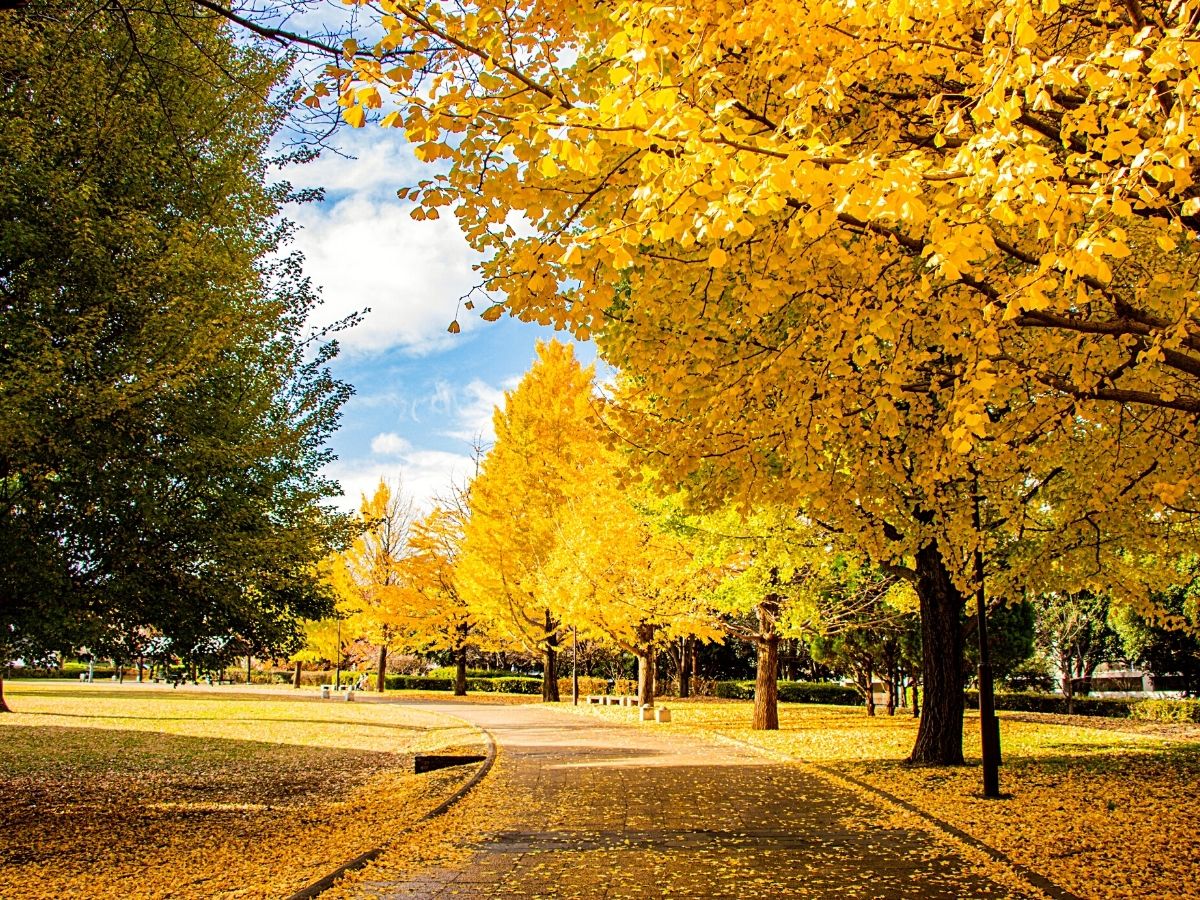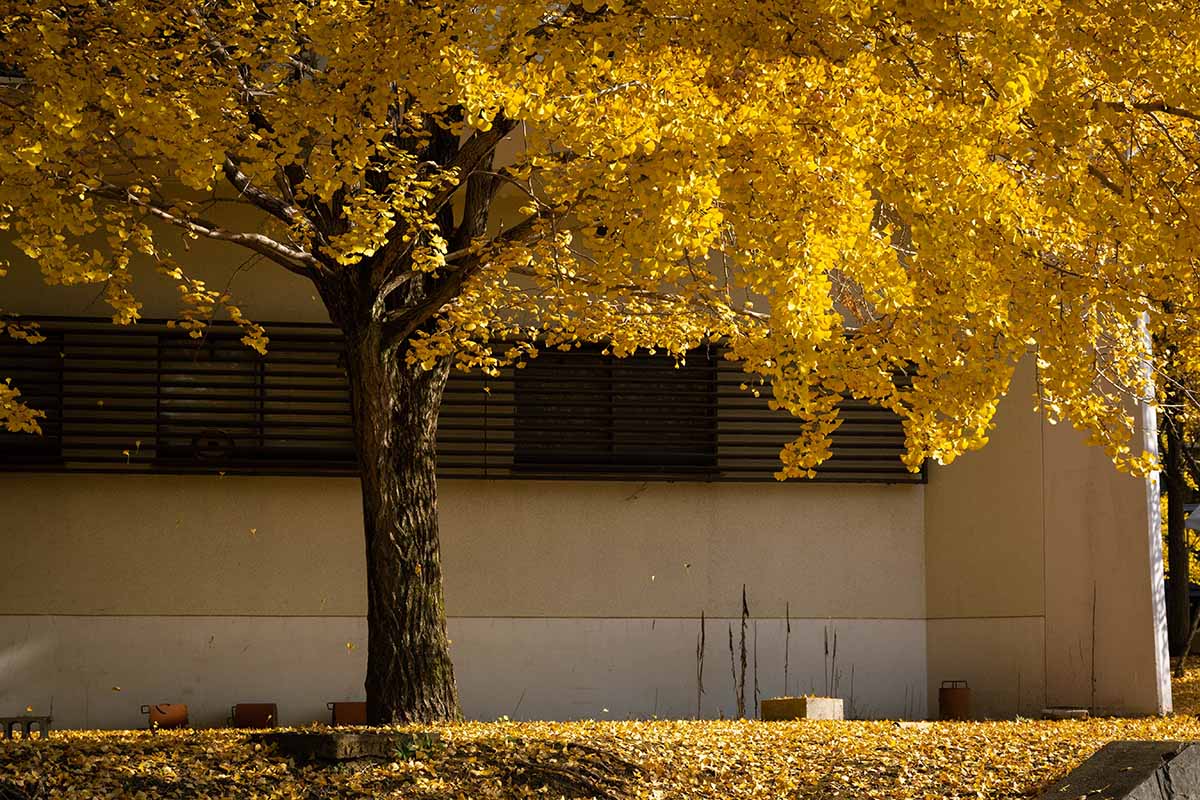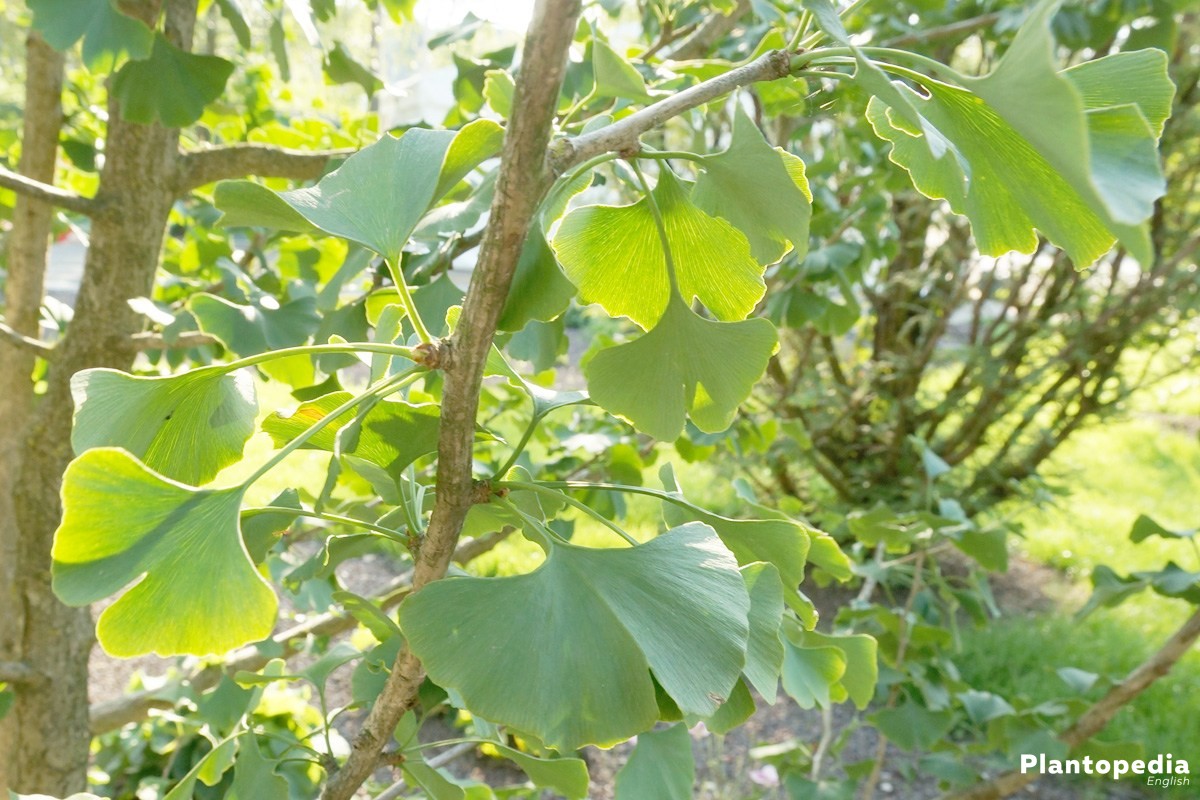Discovering the Natural Habitat of the Ginkgo Tree
The Ginkgo tree, also known as the Maidenhair tree, is one of the oldest living tree species in the world. With a history dating back over 270 million years, this ancient tree has been a witness to the evolution of life on Earth. To understand the significance of the Ginkgo tree, it’s essential to explore its natural habitat and growth patterns. The Ginkgo tree is native to China, Korea, and Japan, where it thrives in temperate climates with mild winters and warm summers. Its unique characteristics, such as its fan-shaped leaves and golden yellow foliage, have made it a popular ornamental tree in many parts of the world.
Despite its widespread cultivation, the Ginkgo tree remains a rare sight in the wild. Its natural habitat is typically found in mountainous regions, where it grows alongside other ancient tree species. The Ginkgo tree’s ability to adapt to different environments has allowed it to survive for millions of years, making it a fascinating subject for study and exploration. By understanding the natural habitat of the Ginkgo tree, we can gain a deeper appreciation for its significance and importance in the natural world.
So, where does the Ginkgo tree grow? The answer lies in its native regions, where it has been growing for millions of years. From the mountains of China to the forests of Japan, the Ginkgo tree is a symbol of resilience and adaptability. Its unique characteristics and growth patterns make it a popular choice for gardeners and botanists alike. Whether you’re interested in cultivating a Ginkgo tree in your backyard or simply learning more about this ancient species, understanding its natural habitat is the first step in unlocking its secrets.
Native Regions and Climate Requirements
The Ginkgo tree is native to the temperate regions of East Asia, specifically China, Korea, and Japan. These countries provide the ideal climate conditions for the tree’s growth, with mild winters and warm summers. In China, the Ginkgo tree is commonly found in the mountainous regions of the southeastern provinces, where the climate is characterized by high humidity and moderate temperatures. In Korea, the tree is native to the southern part of the peninsula, where the climate is slightly cooler and more temperate. In Japan, the Ginkgo tree is widely distributed throughout the country, with a particular abundance in the mountainous regions of central and southern Japan.
The Ginkgo tree requires a specific set of climate conditions to thrive. It prefers temperatures between 64°F and 75°F (18°C and 24°C), with moderate humidity levels ranging from 60% to 80%. The tree is also sensitive to extreme weather conditions, such as drought, flooding, and strong winds. In terms of soil conditions, the Ginkgo tree prefers well-drained soil with a pH range of 6.0 to 7.0. It can tolerate a wide range of soil types, from sandy to clayey soils, but requires adequate moisture levels to maintain healthy growth.
Understanding the native regions and climate requirements of the Ginkgo tree is essential for determining where it can be successfully cultivated. By replicating the tree’s natural habitat, gardeners and botanists can create ideal conditions for the tree’s growth and development. Whether you’re interested in growing a Ginkgo tree in your backyard or simply learning more about this ancient species, understanding its native regions and climate requirements is a crucial step in unlocking its secrets.
How to Identify Suitable Growing Conditions
Identifying suitable growing conditions is crucial for the successful cultivation of Ginkgo trees. To determine where the Ginkgo tree can thrive, it’s essential to assess various environmental factors, including sunlight, soil pH, and moisture levels. Ginkgo trees prefer full sun to partial shade, with a minimum of 4-6 hours of direct sunlight per day. They can tolerate a wide range of soil pH levels, from 6.0 to 7.0, but optimal growth occurs in soils with a pH between 6.5 and 7.0.
Moisture levels are also critical for Ginkgo tree growth. The tree prefers well-drained soil with a consistent moisture supply, but can tolerate some drought. However, prolonged drought can lead to reduced growth and increased susceptibility to pests and diseases. To assess moisture levels, check the soil regularly, and adjust irrigation schedules accordingly. Additionally, consider using mulch or other soil amendments to retain moisture and regulate soil temperature.
When evaluating growing conditions, it’s also essential to consider the specific climate and microclimate of the area. Ginkgo trees are sensitive to extreme weather conditions, such as strong winds, frost, and heatwaves. In areas with harsh winters, provide protection from wind and frost damage by planting the tree in a sheltered location or using protective coverings. In areas with hot summers, provide adequate shade and moisture to prevent heat stress.
By understanding the specific growing conditions required by Ginkgo trees, you can determine where they can thrive and provide the necessary care for optimal growth. Whether you’re a seasoned gardener or a beginner, identifying suitable growing conditions is the key to unlocking the secrets of the ancient Ginkgo tree.
Ginkgo Tree Cultivation Around the World
Ginkgo tree cultivation has become increasingly popular around the world, with many countries successfully growing this ancient species. In the United States, Ginkgo trees are commonly found in urban landscapes, particularly in cities such as New York and San Francisco. They are prized for their unique foliage and ability to thrive in a variety of environments. In Europe, Ginkgo trees are widely cultivated in countries such as Germany, France, and Italy, where they are valued for their ornamental and medicinal properties.
In Australia, Ginkgo trees are grown in many parts of the country, particularly in the southeastern regions. They are often used as street trees and are prized for their ability to tolerate a range of soil conditions and climates. In Asia, Ginkgo trees are cultivated in many countries, including China, Japan, and Korea, where they are highly valued for their cultural and medicinal significance.
Successful Ginkgo tree plantations can be found in many parts of the world, including the United States, Europe, and Australia. These plantations provide a valuable source of Ginkgo leaves and seeds, which are used in traditional medicine and as a food source. In addition, Ginkgo tree plantations play an important role in conservation efforts, helping to protect this ancient species and its habitats.
When cultivating Ginkgo trees, it’s essential to consider the specific climate and soil conditions of the region. Ginkgo trees prefer well-drained soil and full sun to partial shade, making them an ideal choice for a variety of landscapes. By understanding the specific growing conditions required by Ginkgo trees, you can determine where they can thrive and provide the necessary care for optimal growth.
Urban Environments and Ginkgo Tree Growth
Ginkgo trees can thrive in urban environments, including cities and towns, where they are often used as street trees or ornamental plants. However, growing Ginkgo trees in urban areas can be challenging due to the unique conditions found in these environments. Urban areas often have limited space, high levels of pollution, and altered soil conditions, which can affect the growth and health of Ginkgo trees.
Despite these challenges, many cities around the world have successfully incorporated Ginkgo trees into their urban landscapes. For example, in New York City, Ginkgo trees are a common sight in many parks and gardens, where they provide shade and beauty to the urban environment. In Tokyo, Japan, Ginkgo trees are often used as street trees, where they help to mitigate the urban heat island effect and improve air quality.
To grow Ginkgo trees in urban environments, it’s essential to provide them with the right conditions. This includes selecting a location with full sun to partial shade, well-drained soil, and adequate water supply. Regular pruning and fertilization can also help to promote healthy growth and maintain the tree’s shape. Additionally, urban gardeners can use techniques such as mulching and composting to improve soil quality and reduce the need for fertilizers and pesticides.
By understanding the challenges and opportunities of growing Ginkgo trees in urban environments, you can unlock the secrets of this ancient species and enjoy its many benefits in your own city or town. Whether you’re a seasoned gardener or a beginner, growing a Ginkgo tree in an urban environment can be a rewarding and enjoyable experience.
Soil and Nutrient Requirements for Healthy Growth
Ginkgo trees require specific soil and nutrient conditions to grow healthily. The ideal soil for Ginkgo trees is well-drained, rich in organic matter, and has a pH between 6.0 and 7.0. In terms of nutrients, Ginkgo trees require a balanced diet of nitrogen, phosphorus, and potassium. Nitrogen is essential for leaf growth and development, while phosphorus promotes root growth and flower production. Potassium helps to regulate water balance and overall tree health.
Fertilization is an essential part of Ginkgo tree care. A balanced fertilizer with a ratio of 10-10-10 (nitrogen-phosphorus-potassium) is recommended. However, it’s essential to avoid over-fertilization, as this can damage the tree’s roots and lead to nutrient imbalances. Pruning is also crucial for maintaining the health and shape of Ginkgo trees. Regular pruning helps to promote healthy growth, remove diseased or damaged branches, and maintain the tree’s overall structure.
In addition to fertilization and pruning, Ginkgo trees require regular watering and mulching. Mulching helps to retain moisture, suppress weeds, and regulate soil temperature. A layer of 2-3 inches of organic mulch, such as wood chips or bark, is recommended. Regular watering is also essential, especially during the first year after planting. However, it’s essential to avoid over-watering, as this can lead to root rot and other problems.
By understanding the soil and nutrient requirements for healthy Ginkgo tree growth, you can provide your tree with the best possible conditions for success. Whether you’re growing a Ginkgo tree in your backyard or in a urban environment, following these tips can help to ensure a healthy and thriving tree.
Pest and Disease Management for Ginkgo Trees
Ginkgo trees are generally resistant to pests and diseases, but they can still be affected by certain issues. Aphids, scale, and spider mites are common pests that can infest Ginkgo trees, while root rot, leaf spot, and powdery mildew are common diseases. To prevent these issues, it’s essential to maintain good tree hygiene, including regular pruning and watering.
Aphids can be controlled using insecticidal soap or neem oil, while scale can be managed using horticultural oil or insecticidal soap. Spider mites can be controlled using neem oil or insecticidal soap. Root rot can be prevented by ensuring good drainage and avoiding over-watering. Leaf spot and powdery mildew can be managed using fungicides or removing infected leaves.
Regular monitoring is also crucial for detecting pest and disease issues early on. Inspect your Ginkgo tree regularly for signs of pests or diseases, and take action promptly if you notice any issues. By taking proactive steps to prevent pest and disease issues, you can help ensure the health and longevity of your Ginkgo tree.
In addition to these measures, consider using integrated pest management (IPM) techniques, which involve using a combination of methods to manage pests and diseases. IPM can include techniques such as introducing beneficial insects, using physical barriers, and practicing good tree hygiene. By using IPM techniques, you can reduce the risk of pest and disease issues and promote a healthy and thriving Ginkgo tree.
Conservation Efforts and the Future of Ginkgo Trees
Conservation efforts are underway to protect Ginkgo tree populations and habitats. The Ginkgo tree is considered a living fossil, and its preservation is crucial for maintaining biodiversity and ecological balance. Organizations such as the Ginkgo Conservation Society and the International Union for Conservation of Nature (IUCN) are working to protect Ginkgo tree populations and habitats.
One of the main conservation efforts is the establishment of Ginkgo tree sanctuaries and protected areas. These sanctuaries provide a safe haven for Ginkgo trees to grow and thrive, free from human disturbance and habitat destruction. Additionally, conservation efforts are focused on promoting sustainable forestry practices, such as selective logging and reforestation, to ensure the long-term health and survival of Ginkgo tree populations.
Preserving the Ginkgo tree is not only important for its ecological value but also for its cultural and historical significance. The Ginkgo tree has been a symbol of longevity and wisdom in many cultures, and its preservation is essential for maintaining our cultural heritage. By supporting conservation efforts and promoting sustainable practices, we can help ensure the future of the Ginkgo tree and its continued growth and survival.
In conclusion, the Ginkgo tree is an ancient and fascinating species that requires our protection and conservation. By understanding its natural habitat, growth patterns, and conservation needs, we can work towards preserving this incredible tree for future generations. Whether you’re a botanist, conservationist, or simply a nature enthusiast, the Ginkgo tree is a species that deserves our respect, admiration, and protection.






:max_bytes(150000):strip_icc()/ginkgo-biloba-trees-fall-foliage-champ-4119900-11-e253e9da2c904f06b7db761bbf809ef3.jpg)

